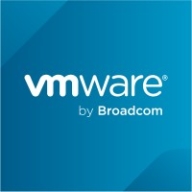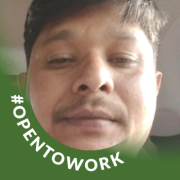

VMware Cloud Foundation and Amazon Bedrock compete in virtualization and AI model management categories. VMware Cloud Foundation holds an edge in virtualization suite features, while Amazon Bedrock leads with its security and AI customization flexibility.
Features: VMware Cloud Foundation provides a comprehensive virtualization suite offering features like disaster recovery, clustering load, and life cycle management. It allows for easy deployment across multiple platforms, significantly reducing setup time. Amazon Bedrock offers security and flexibility in AI model customization, including the ability to fine-tune and integrate pre-trained models. It excels in integrating with data sources, making AI output traceable and actionable.
Room for Improvement: VMware Cloud Foundation could improve integration capabilities, pricing models, and upgrade processes, as well as enhance life cycle and multi-site deployment management. Amazon Bedrock needs better documentation, more integration options, and clearer cost transparency while enhancing Gen AI applications and comprehensive AI features.
Ease of Deployment and Customer Service: VMware Cloud Foundation supports diverse environments like on-premises and private cloud settings, with feedback on technical support quality mixed, noting speed and consistency issues. Amazon Bedrock provides straightforward deployment, optimized for public cloud, with generally positive support experiences but calls for better guidance in complex scenarios.
Pricing and ROI: VMware Cloud Foundation is considered expensive with high licensing costs compared to competitors, though its feature value is acknowledged by users, seeing gradual ROI through operational cost reduction. Amazon Bedrock offers reasonable pricing for model experimentation, albeit with some unexpected charges. Its ROI is not frequently assessed, highlighting cost-effectiveness in model hosting.
VMware Cloud Foundation allows cost and time savings by quickly deploying infrastructure requests and integrating automatic ticketing and backup services.
In terms of ROI, although VMware Cloud Foundation is expensive, it saves time in most cases, which indirectly saves costs for users.
We are experiencing the fastest time ever to get things done with AI integrating into our work, regardless of where we are.
So, you always have to bridge the gap by presenting scenarios, getting recommendations, and testing or validating those assumptions.
My experience with the technical support has been very good because they resolved my billing issue within a day.
There are times when support is unclear, and even VMware support personnel may lack familiarity with certain parts, causing difficulties.
Based on my nine years of experience with VMware, I would evaluate their technical support as effective.
Our technical support team is capable of providing support on the operating system side.
It is scalable on a truly global basis.
Amazon Bedrock is quite highly scalable, but there are some limitations they impose on the accounts, which could be an area for improvement.
It scales well with AWS Lambda, AWS Transcribe, and Polly.
When more hosts are added, performance goes slow.
VMware Cloud Foundation supports scalability and company growth.
VMware Cloud Foundation is quite scalable, receiving a rating of eight and a half to nine out of ten.
The stability of Amazon Bedrock is good as I have not faced any issues.
The stability of VMware Cloud Foundation is very high.
If one component fails to operate in a timely manner, the entire infrastructure can go down because everything is interconnected.
I am currently satisfied with the stability of VMware Cloud Foundation, though having started only two to three months ago, I am still in the monitoring phase.
In AgenTek AI business, the only foundation models we can rely on for scaling now are the Cloud 3.5 models like Haiku and SONNET, designed for low latency and complex AI business use cases.
For companies in general, the main pain point or main issue related to Amazon Bedrock is security because they are not confident that all information is hidden by this kind of architecture.
If AWS provided methods, like five or six prompts that yield specific results, it would ease development.
VMware Broadcom needs to include auto resource allocation at the VM levels.
The maintenance cost has increased significantly, especially after Broadcom acquired VMware, with a shift from socket-based licensing to core-based licensing.
Each user needs deep knowledge of every aspect of virtualization.
Our cost is incredibly low, operating for a few hundred dollars a month in production.
One customer paid around $100 to $200 per month, which was significant given their overall infrastructure costs.
The pricing and licensing of Amazon Bedrock are quite flexible.
The cost has become very high, especially after Broadcom's acquisition, altering the licensing model to a more expensive core-based system.
The price is quite higher than some other vendors.
VMware Cloud Foundation is quite expensive when compared to its competitors, but it does save time, which in turn saves money.
It has improved operational costs and efficiency significantly, saving money and enhancing the quality of operations.
The valuable features that have helped in leveraging generative AI for operational efficiency improvements include customization capabilities, various types of models suitable for specific use cases, and the integration of knowledge bases.
The ability to make changes in the foundational model is valuable since different customers have specific needs, allowing customization.
The solution now offers auto-deployment of VMs.
All features of VMware Cloud Foundation are valuable to us, as it covers every industry standard protocol and requirement protocol.
VMware Cloud Foundation allows for extensive customization, aligning with our customer requirements.


| Company Size | Count |
|---|---|
| Small Business | 7 |
| Midsize Enterprise | 1 |
| Large Enterprise | 6 |
| Company Size | Count |
|---|---|
| Small Business | 7 |
| Midsize Enterprise | 3 |
| Large Enterprise | 27 |
Amazon Bedrock enhances AI integration by providing a suite of foundational models with customization options. It simplifies data integration and offers security, traceability, and cost-efficiency through its serverless architecture.
Amazon Bedrock empowers users by offering models from multiple providers, ensuring model flexibility and ease of use. It supports quick development for applications such as vector search and SQL query generation. While the system is beneficial for AI integration and analytics enhancement, there is a desire for improved documentation, smoother integration, and more competitive pricing. Additional integration points, markdown features, and support for voice and images could enhance its use. Users also seek to optimize for hyperscale use and receive multiple responses for creative tasks.
What are the key features of Amazon Bedrock?
What benefits should be considered?
In industries like data analytics and software development, Amazon Bedrock is implemented for tasks such as deploying large language models, performing sentiment analysis, and creating chatbots. It's used for generating AI-driven text and images, and enhancing data retrieval via SQL query generation.
VMware Cloud Foundation makes it easy to deploy and run a hybrid cloud. VMware Cloud Foundation provides integrated cloud infrastructure (compute, storage, networking, and security) and cloud management services to run enterprise applications in both private and public environments.
We monitor all Infrastructure as a Service Clouds (IaaS) reviews to prevent fraudulent reviews and keep review quality high. We do not post reviews by company employees or direct competitors. We validate each review for authenticity via cross-reference with LinkedIn, and personal follow-up with the reviewer when necessary.